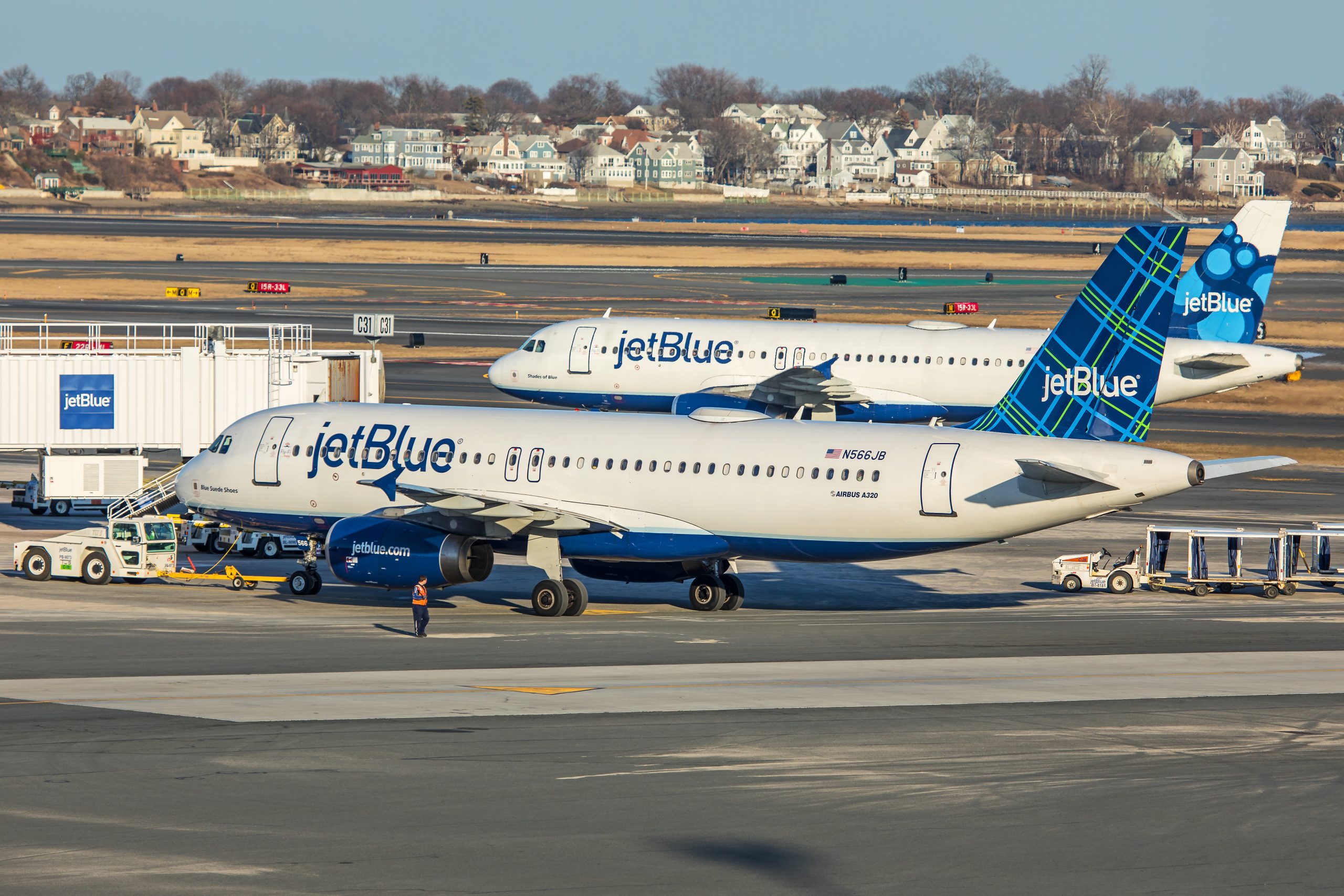
JetBlue Reveals Diminished First Quarter Earnings
On Tuesday, JetBlue announced that it has adjusted its annual revenue forecast. The carrier announced that its revenue will be…

A Southwest Airlines 737-700 pushing back at Pittsburgh. (Photo: AirlineGeeks | William Derrickson)
On Oct. 22 Southwest Airlines announced the company’s third-quarter financial results. As expected the airline posted a large loss and continues a high level of daily cash burn as the industry continues to navigate the effects of the Covid-19 pandemic. The airline also announced a change to the passenger experience for travelers beginning December 1. In addition to its financial performance, the airline is continuing its expansion plans, announcing three new additions.
Southwest posted a loss of $1.2 billion for the third quarter. The airlines saw revenues of $1.8 billion, which was down 68.2 percent over last year’s third quarter. Southwest reported total liquidity of $15.6 billion of which $14.6 billion in cash and short-term investments and the remaining $1 billion is a revolving line of credit. This is reportedly well over the airline’s outstanding debts, although the level of debt was not announced.
The airline has been improving on a key financial aspect since the pandemic began, daily cash burn. Overall for the third quarter, the airline saw a $16 million daily cash burn, which reduced to an average of $12 million a day for September. This is a vast improvement over the second quarter when the airline averaged a daily cash burn of $23 million. To break even on cash burn, the airline estimates it would need to see revenues between 60-70 percent of 2019 levels, which is approximately double the level of the third quarter of 2020.
Fleet wise, the airline has seen little change. During the quarter the airline returned two leased 737-700 and retired one owned 737-700, and for the fourth quarter plans to return three more leased 737-700. The airline presently has a fleet of 734 Boeing 737 aircraft in its fleet. On average the airline has approximately 150-250 aircraft in some form of storage, of which 100 are in long-term storage, including 34 737 Max aircraft. Despite recent progress on the return to service of the 737 Max, the airline does not expect the aircraft to be back in service until the second quarter of 2021.
As part of its financial results, the airline announced a change to its booking policy that will affect passengers. Beginning December 1, the airline will stop booking middle seats and begin allowing aircraft to be booked to capacity. CEO, Gary Kelly says that this decision was not made lightly and cited multiple studies that have shown that the risk of transmission of Covid-19 onboard airplanes is extremely minimal. The move puts Southwest in line with American Airlines and United Airlines, while Jetblue, Alaska, and Delta Air Lines will continue to block middle seats into the new year.
Aside from the airline’s financial performance, Southwest is continuing its expansion tear. Since the pandemic began, the airline has added nine new destinations including three announced today. The airline will add service to Colorado Springs, Jackson, Mississippis, and Savannah, Georgia by June 2021. Specific routes or service start dates have not yet been announced.
The airline has been adding service to leisure, outdoor destinations as consumer demand changes. Southwest has already announced service to Miami, Palm Springs, and Montrose, Colorado to serve the Telluride Valley ski resorts. Also, the airline has announced plans to both Chicago O’Hare and Houston Intercontinental, two airports that previously would seem unlikely to ever see Southwest service. Since the pandemic began travelers have preferred open, outdoor destinations that would allow for people to vacation while social distance.
Although Southwest’s financial report looks grim, there are signs of improvement. The biggest indicator is the continued decline in the daily cash burn of the airline. Importantly the airline has been able to do this while not furloughing employees, although employees have taken voluntary leave to help reduce costs. The decision to focus on leisure destinations will help the airline recover quicker, however, the decision to unblock the middle seat may prove unpopular with some travelers.
Daniel has always had aviation in his life; from moving to the United States when he was two, to family vacations across the U.S., and back to his native England. He currently resides in South Florida and attends Nova Southeastern University, studying Human Factors in Aviation. Daniel has his Commercial Certificate for both land and sea, and hopes to one day join the major airlines.
Receive a daily dose of the airline industry's top stories along with market insights right in your inbox.

On Tuesday, JetBlue announced that it has adjusted its annual revenue forecast. The carrier announced that its revenue will be…

Royal Air Maroc and Safran have deepened their collaboration in aircraft engine maintenance. In celebration of its 25th anniversary, Safran…

The importance of the North American market to Fiji Airways has been further highlighted with the announcement of an interline…



